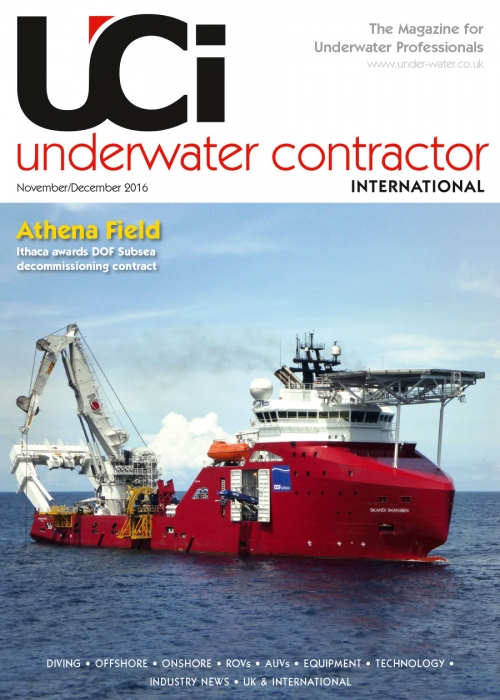
The Magazine for Underwater Professionals
![]() Sep/Oct 2015
Sep/Oct 2015
SCIENCE & TECHNOLOGY
Robotic gliders herald sea of change in ocean survey work
Autonomous vehicles are changing the way scientists collect oceanographic data
Robotic underwater Seagliders used by the Oban-based Scottish Association for Marine Science (SAMS) have now gathered the equivalent of five years of oceanographic data, most of which was collected in the past 18 months.
This milestone highlights a major change in how marine scientists collect information such as sea temperature, salinity, pressure and oxygen, as the six-foot (1.8-metre) long Seagliders can spend months at sea collecting data that contributes to our understanding of climate change.
To date, the seven SAMS Seagliders have spent the equivalent of five years at sea, travelling more than 33,000 kilometres. In late July, one of the Seagliders, Ardbeg, broke a SAMS distance record by completing a return trip of more than 3400 kilometres along the Extended Ellett Line, a route from Scotland to Iceland that has been surveyed by scientists for 40 years.
OBSERVATIONS
Dr Stefan Gary, a research associate in physical oceanography at SAMS, says: “Seagliders allow oceanographers to make cost-effective, long-term and long-distance observations, often in hard-to-access regions that ships rarely frequent and other ocean robots rarely go.
“Because of their durability we often deploy them in the winter, as they have been known to withstand extreme storm-force conditions.
“Seagliders also allow for very dense sampling of the ocean, collecting a profile every three kilometres, while a survey vessel usually samples every 10 to 30 kilometres.”
Seagliders collect data down to 1000 metres as they slowly submerge towards the seabed and then rise to the surface, using fixed wings and a hydrodynamic shape to create a forward movement. To submerge, a battery-powered pump moves oil into a pressurised container, increasing the density of the glider in the water and causing it to sink. To bring the glider to the surface, oil is pumped back into a bladder to increase buoyancy. Live data is sent by the gliders via satellite to the pilots at SAMS, who can control and re-direct them remotely in near real-time.
SAMS owns two Seagliders – purchased in 2009 and 2011 – and has operated another five from the UK Natural Environment Research Council’s (NERC) Marine Autonomous and Robotic Systems (MARS) instrument pool since April 2014. SAMS, which is ideally situated for deep-sea Atlantic research, runs the Scottish Marine Robotics Facility, a command and control centre for Seaglider operations.
PROJECTS
Currently, the SAMS Seagliders are contributing to three major NERC-funded projects: the Extended Ellett Line, a time series monitoring the evolution of the waters flowing between Scotland and Iceland; the FASTNEt project, looking at physical exchange processes between the deep ocean and shelf seas; and the international OSNAP project, which will monitor the oceanographic circulation across the subpolar North Atlantic until 2018. Scientists across Europe are working together towards maximising the gliders’ potential in terms of data quality, quantity, accessibility and cost effectiveness through projects such as AtlantOS or as part of the glider community group EGO.
In addition to collecting large quantities of new data, the SAMS Seaglider programmes have had a pivotal role in the training of several early career scientists and technicians. This focus on the next generation of researchers complements the new NERC initiative for a smart and autonomous observation Centre for Doctoral Training, which may lead to future opportunities.


